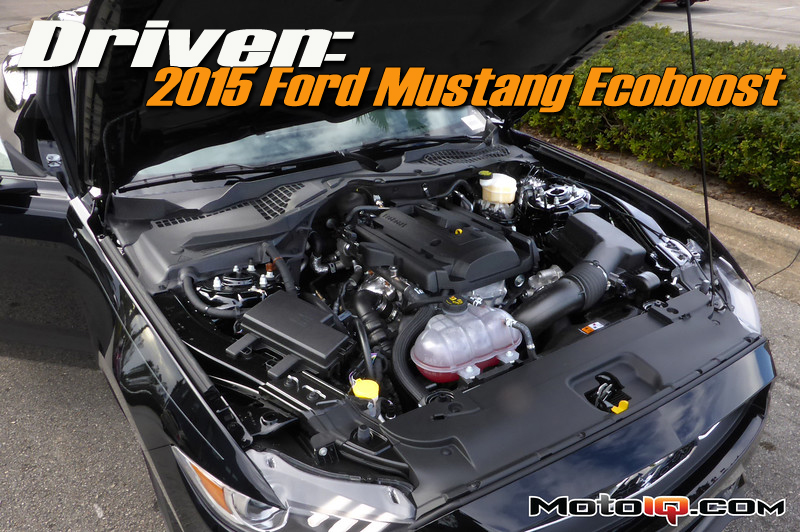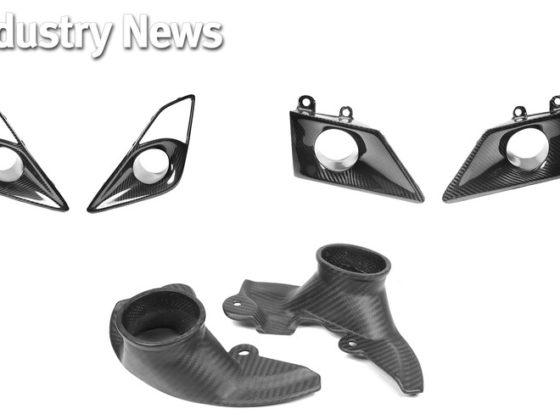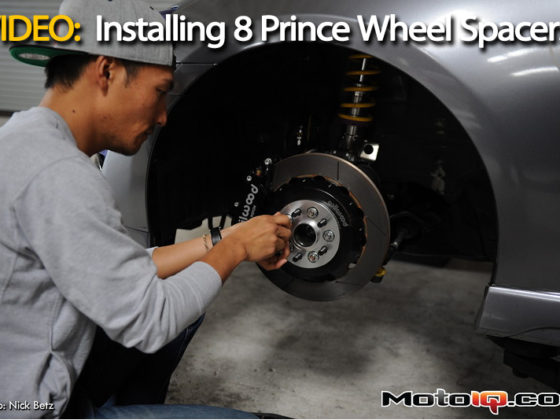,
 The spacious engine bay is designed to fit an engine twice as large as the Ecoboost’s 2.3L inline-4. This leaves tons of room for your hands to access any part of the engine for service or upgrades. The Ecoboost has one of the most mechanically user-friendly engine bays on the market today.
The spacious engine bay is designed to fit an engine twice as large as the Ecoboost’s 2.3L inline-4. This leaves tons of room for your hands to access any part of the engine for service or upgrades. The Ecoboost has one of the most mechanically user-friendly engine bays on the market today. The Ecoboost’s twin-scroll turbo bolts directly to the head itself with 4 easily accessible bolts. The head has an integrated manifold with a split outlet. By combining two pairs of cylinders into separate runners, throttle response is improved with the twin scroll turbo. Thankfully the outlet of the head is not a choke point and is large enough to accommodate a much larger turbo. Above the turbo is the coolant return line. Coolant flows from the radiator into the front of the engine and then out of the back which ensures consistent cooling throughout the block.
The Ecoboost’s twin-scroll turbo bolts directly to the head itself with 4 easily accessible bolts. The head has an integrated manifold with a split outlet. By combining two pairs of cylinders into separate runners, throttle response is improved with the twin scroll turbo. Thankfully the outlet of the head is not a choke point and is large enough to accommodate a much larger turbo. Above the turbo is the coolant return line. Coolant flows from the radiator into the front of the engine and then out of the back which ensures consistent cooling throughout the block. Ford has always done a great job with the ducting with their air intakes, directing cool air from the front of the car around the radiator and into the car’s intake.
Ford has always done a great job with the ducting with their air intakes, directing cool air from the front of the car around the radiator and into the car’s intake.With a base price of $27,190, the 310hp, 320tq 2.3L Mustang Ecoboost is nearly six grand less than the 435hp, 400tq 5.0L V8 while averaging 6mpg better in both city and highway driving. For fun, let’s compare the Ecoboost to arguably one of the most iconic turbocharged, rear-wheel drive tuner cars in history, the MKIV Toyota Supra Turbo:
 |  |
While this sounds like a silly comparison, the performance is a lot closer than you would imagine. With a deficit of 700ccs, 1 turbocharger, and 10hp; the Ecoboost actually makes 5 more lb-ft of torque than the 6 cylinder Supra, but has to carry an additional 158lbs (3,663lbs vs 3,505lbs). The Ecoboost sprints to 60 in 5.2 seconds and 13.9 sec at 98mph in the ¼ mile according to C&D, which is not far off MT’s 1997 Supra test which hit 60 in 5.1 sec and took 13.6 sec at 106mph in the ¼ mile.
 |  |
Equipped with the $1,995 Performance Package, the Ecoboost wears 255/40-19’s Pirelli P Zeros on all four corners and is equipped with a K-Brace, a larger rear swaybar, 3:55 final drive ratio with an LSD, a larger radiator, stiffer front springs, a boost and oil pressure gauge, and GT-sized 13.9” 4-piston front calipers and 13” rear rotors and single piston caliper.
All of this enables the Ecoboost to complete the Figure-8 in 25.5 seconds (24.7 sec for the GT) at 0.96 G’s which is 0.02 G’s higher than both the Mustang GT and Supra (which wears staggered 235/255 17” tires). The wide tires of the Ecoboost allow it to stop from 60 in a mere 106ft, compared to 115ft for the Supra and 108ft for the BOSS 302. While it’s understandable that cars get faster over time and nearly 20 years separate these two, I find it pretty cool that the performance of this $30,000 base Mustang is equivalent to such an iconic car that retailed for twice as much in today’s money.



